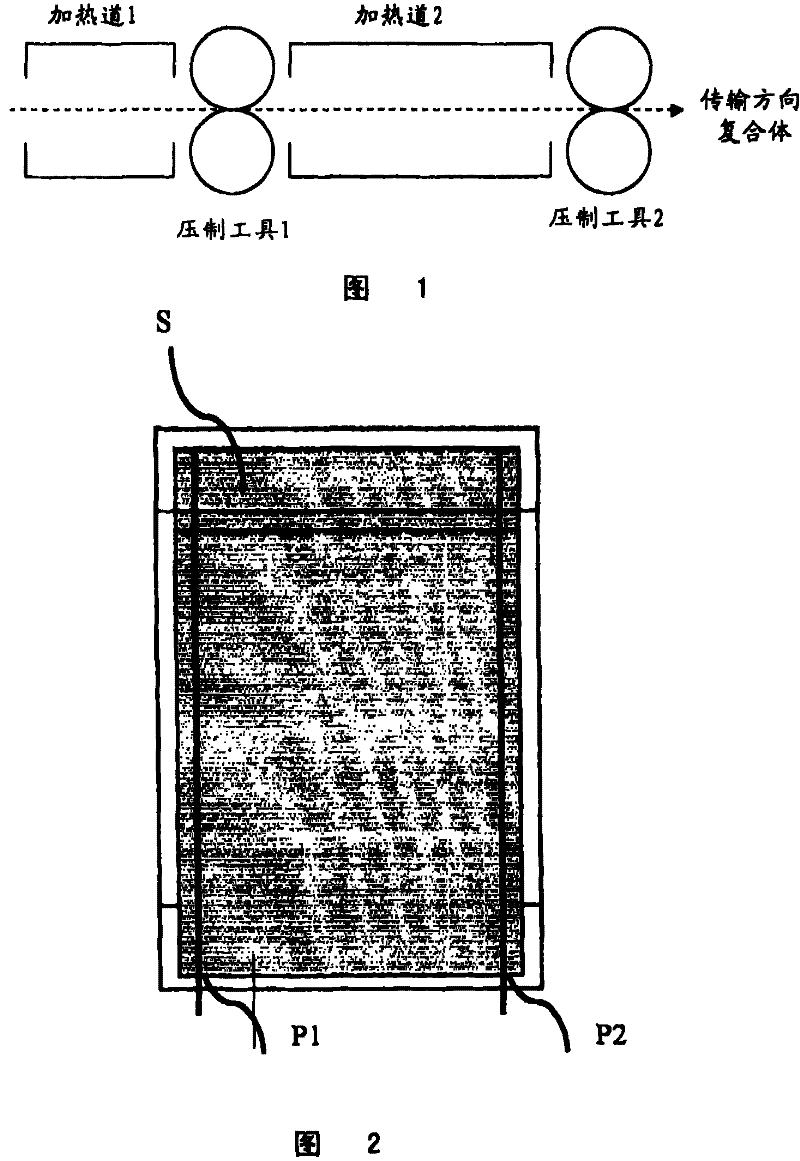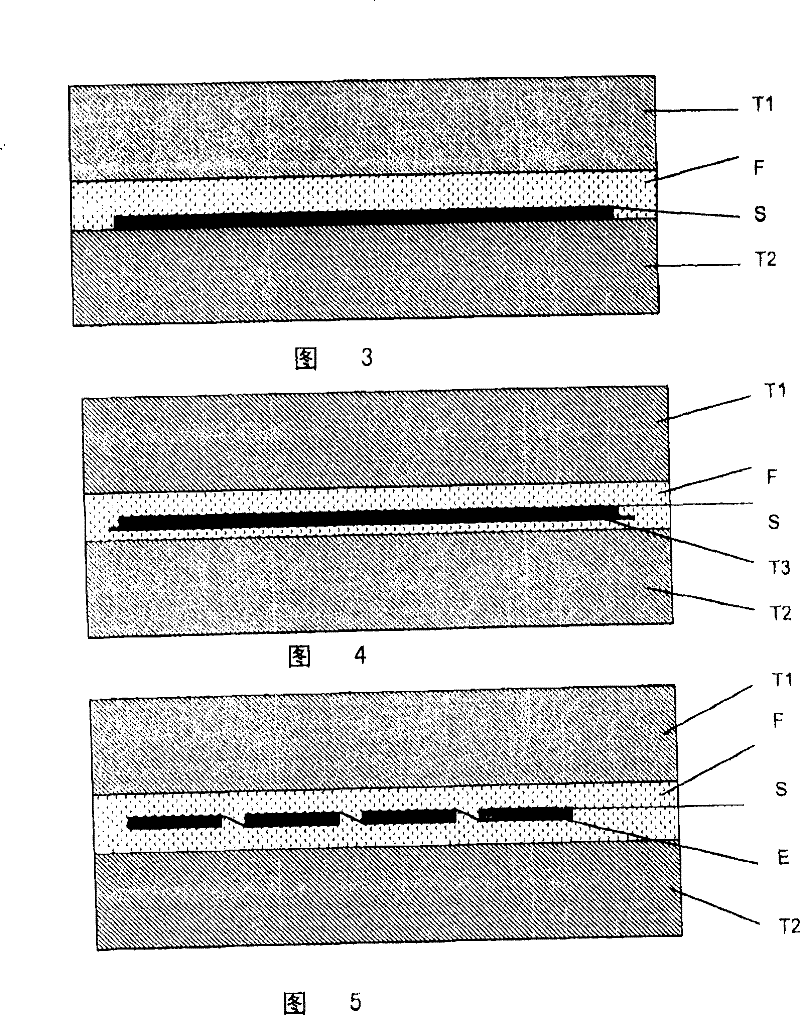Method of producing solar modules by the roller laminate process
A technology of solar cells and components, applied in the direction of electrical components, chemical instruments and methods, lamination, etc., which can solve the problems of not being able to adequately prepare complexes with thin-layer solar cell components on an industrial scale
- Summary
- Abstract
- Description
- Claims
- Application Information
AI Technical Summary
Problems solved by technology
Method used
Image
Examples
Embodiment
[0044] In such figure 1 In the equipment shown, the thin-layer module is pressed at a temperature of 90°C (measured after the last pressing tool) and a line pressure of 35N / mm and a feed rate of 3m / min. The size of the thin-layer module is 30 cm long x 20 cm wide and the glass thickness is 3.2 mm, and it also has two conductive tapes with a length of 20 mm from the edge and a width of 2 mm and a thickness of about 250 μm. The running direction of the composite body is selected so that the outlet of the conductive channel from the module is located behind and finally suppressed. As a softening agent-containing polyvinyl acetal film, the roughness R is used Z It is a Trosifol HR 100 type membrane (Kuraray Europe GmbH) of approximately 100 μm.
[0045] The line pressure of the pressing tool is lowered to the weight of the upper roller on the first 10mm and the last 30mm of the layer.
[0046] A slightly turbid, bubble-free laminate was obtained.
[0047] In the subsequent autoclave pr...
PUM
| Property | Measurement | Unit |
|---|---|---|
| surface roughness | aaaaa | aaaaa |
| thickness | aaaaa | aaaaa |
| thickness | aaaaa | aaaaa |
Abstract
Description
Claims
Application Information
 Login to View More
Login to View More - R&D
- Intellectual Property
- Life Sciences
- Materials
- Tech Scout
- Unparalleled Data Quality
- Higher Quality Content
- 60% Fewer Hallucinations
Browse by: Latest US Patents, China's latest patents, Technical Efficacy Thesaurus, Application Domain, Technology Topic, Popular Technical Reports.
© 2025 PatSnap. All rights reserved.Legal|Privacy policy|Modern Slavery Act Transparency Statement|Sitemap|About US| Contact US: help@patsnap.com



